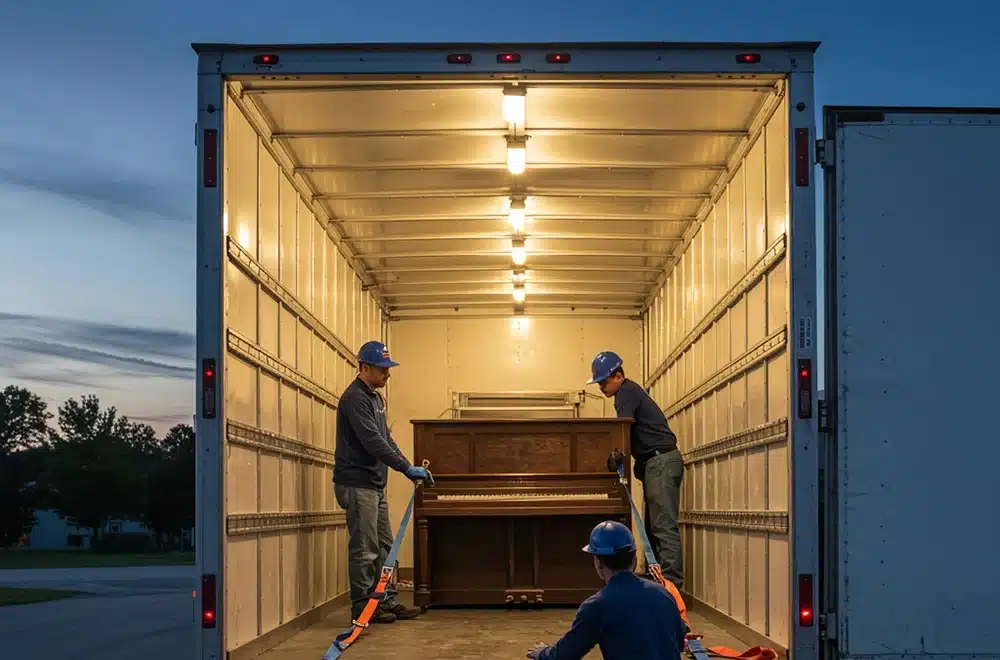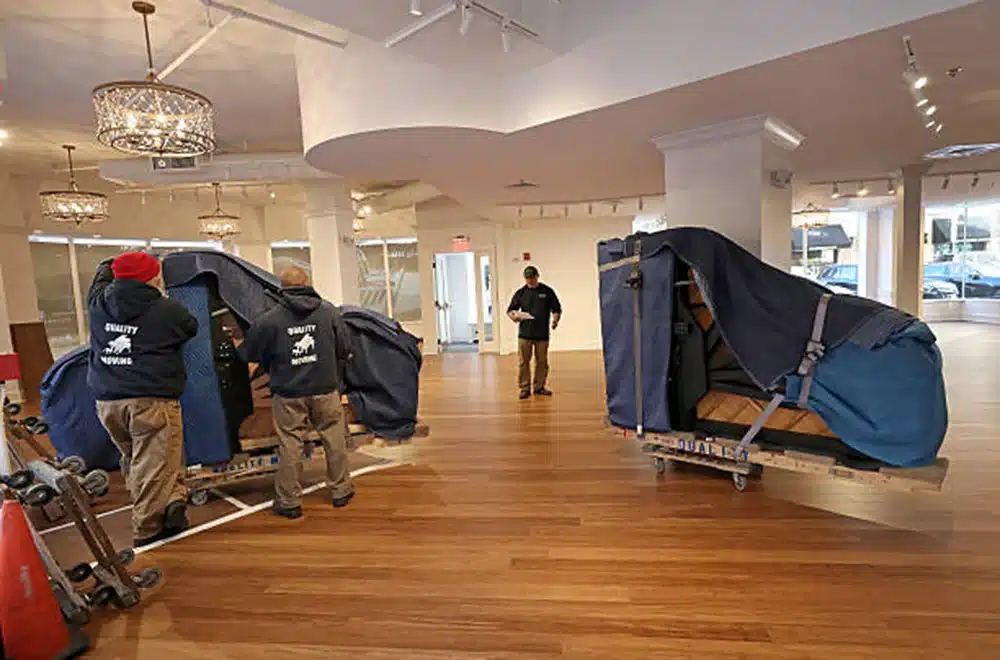With its rich sounds and captivating melodies, the piano is a timeless musical instrument adored by countless individuals worldwide. Behind the enchanting harmony of each piano lies the fascinating tale of its creation, a journey crafted by skilled artisans, innovative minds, and an ever-evolving blend of materials and techniques. Piano Movers of Houston, your trusted partner in piano moving and storage, invites you to step back in time as we explore the captivating history of piano manufacturing and the developments that shaped the artistry behind these beloved instruments.
The historical tapestry of piano manufacturing is interwoven with transformative discoveries and imaginative adaptations. As we journey through this complex landscape, we’ll examine the various materials employed throughout the centuries, including traditional woods, inventive metal components, and even eye-opening plastics utilized in modern construction. We’ll dissect key milestones in manufacturing techniques, detailing innovations that enriched piano designs, such as the development of the cast iron frame, which revolutionized structural resilience and tuning stability.
Unraveling the Origins: Traditional Woods in Piano Manufacturing
Traditional woods were the backbone of the construction process in the earliest stages of piano manufacturing. European piano makers primarily employed woods like spruce, maple, beech, and mahogany due to their favorable acoustic qualities, durability, and weight. These materials laid the foundation for the piano’s soundboard, frame, and outer casings.
In the late 19th and early 20th centuries, American piano manufacturers introduced additional wood species like poplar, birch, and walnut. These woods proved to have abundant tonal capabilities and structural stability. For instance, Sitka spruce, a native wood to the Pacific Northwest, showcased outstanding stiffness and tonal quality, making it a preferred choice for modern soundboards.
With the extensive use of wood, manufacturers faced the challenge of sourcing consistent and sustainable materials. Over time, wood alternatives emerged as engineered and synthetic products, highlighting the adaptability of piano manufacturing to evolving circumstances and resources.
Metal Works: Revolutionizing Piano Design and Tuning Stability
While manufacturing techniques advanced, piano builders embarked on a mission to improve the instrument’s strength and reliability. This desire manifested in significant innovations, including the introduction of metal components. The most noteworthy development was the cast iron frame, which brought about a remarkable shift in piano structure and design.
Introduced by Alpheus Babcock in 1825, the cast iron frame allowed for greater durability and enhanced resistance against the high tension exerted by piano strings. This invention enabled manufacturers to use more robust components, including better string materials and fastening techniques. Consequently, pianos could produce a broader range of notes, maintain their tuning more efficiently, and withstand the rigors of transportation and varying environments.
Today, the cast iron frame remains an indispensable component in modern pianos, a testament to the ingenuity of craftsmen and the power of innovation in shaping the instrument’s evolution.
The Emergence of Plastics: Shaping the Future of Piano Manufacturing
As the demand for pianos surged and environmental concerns increased, piano manufacturers started exploring innovative materials. Plastics soon gained popularity with their versatile properties and reduced environmental impact. In the mid-20th century, the first plastic piano, designed by Julius Kock and Otto Schimmel, was showcased at a German trade fair in 1951.
From hammers and keys to piano actions, plastics offer several advantages, including consistency in production, affordability, and lightweight characteristics. However, they also raised concerns about material longevity, acoustic quality, and the potential loss of traditional craftsmanship. Despite such reservations, the industry has well-received plastic adoption in piano manufacturing, bringing about new opportunities and unique designs.
Contemporary manufacturers have demonstrated the power of leveraging plastic materials, such as the visually striking Blüthner Lucid series, which combines traditional craftsmanship with modern construction.
Evolution in Design: Blending Tradition and Innovation
Throughout history, piano manufacturing techniques have evolved to accommodate changing preferences and the introduction of new materials. The industry has witnessed glimmers of forward-thinking design, such as the double iron framing of the Grotrian-Steinweg pianos and the daring Plexiglas structure of the Poul Henningsen PH Pianette.
These innovations signify a shift in how we perceive pianos, from an instrument that once exuded classical elegance to a futuristic art object. Blending tradition, functionality, and modernity, the world of piano manufacturing indulges the visionaries who dare to embrace the unconventional.
A Symphony of Innovation and Time-Honored Craftsmanship
At the heart of every piano is joining centuries-old traditions and cutting-edge advancements in materials and techniques. The dynamic and ever-evolving nature of piano manufacturing instills curiosity and admiration for the countless components that harmonize to shape the instrument’s unique character.
Piano Movers of Houston is passionate about providing exceptional moving services and engaging and informative resources that enrich your understanding of the complex world grounded in the art of piano making. As you explore the symphony of craftsmanship that resonates within your piano, we remain devoted to ensuring its safe transport so that your cherished instrument fills your world with an exquisite melody.
Related Posts

Preparing Your Piano for a Move: What Professionals Do Before It Leaves

Move Your Piano in a Climate-Controlled Transport: Why It Matters
